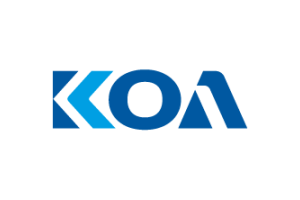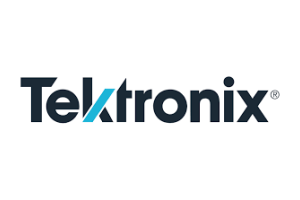Sigfox Expands Strongly
"A Lot of Big Projects Are Rolling out This Year"
"This year Sigfox reaches the critical mass that allows users to implement their projects quickly and above all to realize a rapid return on investment," explains Vincent Sabot, Vice President Europe of Sigfox in an interview with Markt&Technik.
Markt&Technik: Why do companies use Sigfox?
Vincent Sabot: We now have a very nice example: Louis Vuitton wanted to give customers a way to track exactly where their luggage is at the airport. It is important for air travelers that this works across borders in all countries of the world. That is why Louis Vuitton was clear from the outset: "This is the minimum requirement, because if a customer has bad experiences because the tracking system does not work, then the company achieves the opposite of what it intends. So Louis Vuitton needed reliable data transmission and worldwide functionaltiy. Sigfox can do just that: We cover all regions of the world. Other LPWAN techniques cannot. Low energy consumption in combination with global networking without roaming charges is the decisive factor for us.
How large is the installed base of Sigfox currently?
We have recently reached 3 million devices on the network, no other technology can match this figure. Sigfox is the only global network; this year we will be represented in 60 countries. Worldwide, the Sigfox network now reaches 803 million people, 30 million more every month.
Can commercial projects now be realized?
Most importantly, because we already have a presence in 45 countries - 18 of which are fully covered by our network - global companies can now build systems that will pay for themselves quickly. Above all, we also have many industrial use cases.
Sigfox is represented in many countries of the world, but it costs a lot of money to build up the infrastructure. So Sigfox would have to keep picking up speed to make a profit?
That is what is happening. For 2018, we expect sales of EUR 70 million and 7 to 8 million objects in the network.
What exactly makes you so optimistic that you can achieve this?
As the example of Louis Vuitton shows, we have won customers in the B2C sector. Louis Vuitton has developed a Sigfox tracker as an accessory for the Horizon models 50, 55, and 70, which is clipped into a bag in the cases. This is an important step for us. Above all, however, we are pleased that we have already gained many partners in the industrial sector.
How many partners are there?
These include well-known large companies such as Airbus, Bosch, and Total, but also many medium-sized companies. Much has already happened in the field of electromobility.
Like what, for example?
Bosch, for example, uses Sigfox to locate electric scooters.
The automotive sector and mobility concepts are also likely to be an interesting market in other respects.
Yes, in any case, we will soon be publishing something very interesting on the subject of logistics in the automotive industry. And another example from the field of agriculture comes to my mind: Fliegl has developed a monitoring system that monitors whether trailers are properly coupled to the tractor and where they are located. The company has even won two prizes.
Can you give another example of how a typical mid-sized company uses the system?
One of the many examples that springs to mind is Bergische Achsen, a company that produces truck axles. It is a typical German medium-sized company that has built its smart logistics system on the basis of Sigfox and is now marketing this to other interested parties. This example also shows very well how the business model can be extended via Sigfox.
So a lot has happened in secret over the last few years?
Exactly. Especially in the industrial sector it takes quite a long time until a system based on Sigfox can be implemented. For Louis Vuitton, this took 18 months, which went very smoothly and relatively quickly. Bosch's localization system for the electric scouters also took 18 months to get there. But that also makes me quite sure that the forecasts for this year are not exaggerated. Many companies have already shown in their projects that the systems work and are now rolling out the devices.
Everyone is talking about China at the moment. Is Sigfox active there?
We started in China and will cover the 20 largest cities. India is also developing now.
On the technical level, NB-IoT is now on the rise. Could this cut the ground from under Sigfox's feet?
The techniques differ and are aimed at different applications. If a high bandwidth is required, as in some Smart City projects, then NB-IoT is suitable. The coverage is not so good for that. But not all telecommunications providers rely on NB-IoT. Some don't have it on offer like Orange. There are countries and regions that have no network. This would not have been an option for Louis Vuitton, for example. We offer the complete end-to-end service, guaranteeing that the data actually arrives. A telecommunications company doesn't do that.
So the systems would complement each other?
That is my view, and that is also the view of telecommunications companies such as Telefonica. Others like Deutsche Telekom are not yet convinced. I think we still have some convincing work to do here. But there are also some other telecommunications providers with whom we are in close contact.
You basically do not see yourself in competition with these providers?
We see ourselves as an IoT service provider that builds its own wireless network to connect even the simplest things. We want to enable companies to build exactly the system based on our technology that helps them solve their problems and penetrate new business areas. An important point here is that companies retain full control over their data; data sovereignty lies with them. Because there are not so many IoT cloud providers in Europe, we see ourselves in a very good position.
An essential point is the price users have to pay to be connected. How high is it right now?
That's hard to say, depending on the system it might be between 50 cents and 7 euros. However, we are also working hard to further reduce the prices for the modules. In cooperation with the Technical University of Deggendorf, it will be possible to produce slimmed-down modules that can be used to network objects for 20 cents to 1 euro. Even disposable items, packaging, and envelopes could be networked in this way.





